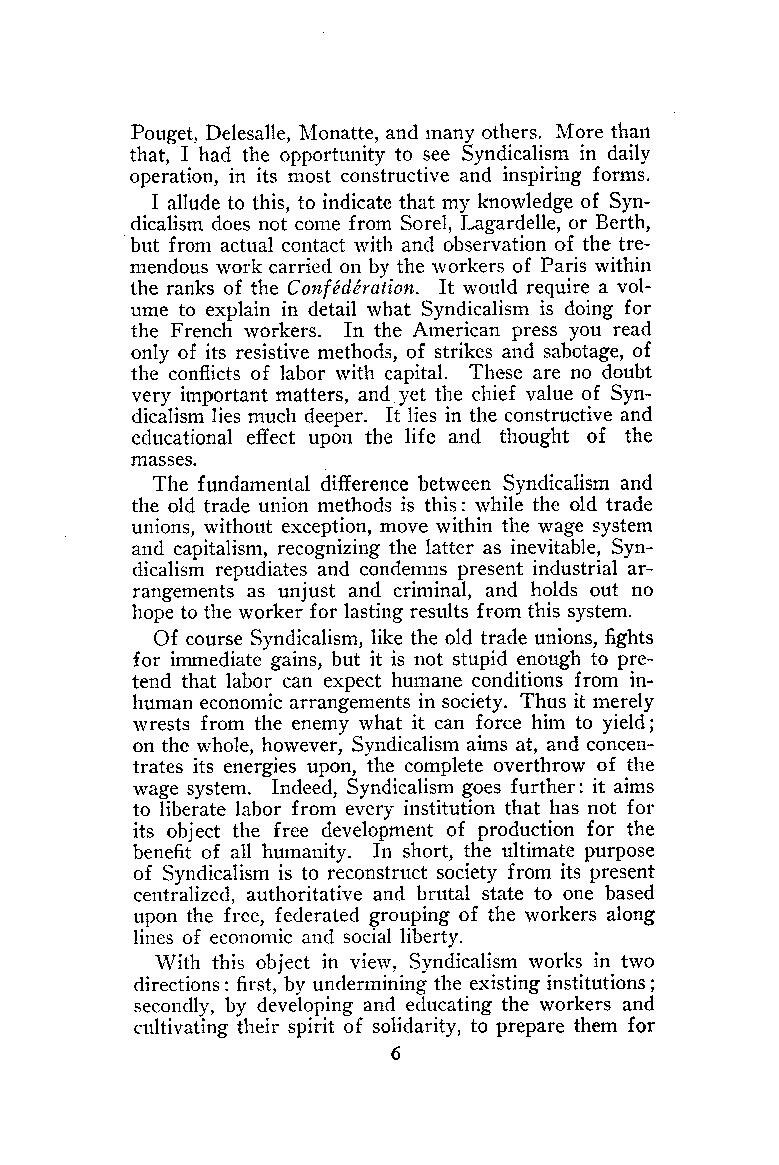Pouget, Delesalle, Monatte, and many others. More than that, I had the opportunity to see Syndicalism in daily operation, in its most constructive and inspiring forms.
I allude to this, to indicate that my knowledge of Syndicalism does not come from Sorel, Lagardelle, or Berth, but from actual contact with and observation of the tremendous work carried on by the workers of Paris within the ranks of the Confédération. It would require a volume to explain in detail what Syndicalism is doing for the French workers. In the American press you read only of its resistive methods, of strikes and sabotage, of the conflicts of labor with capital. These are no doubt very important matters, and yet the chief value of Syndicalism lies much deeper. It lies in the constructive and educational effect upon the life and thought of the masses.
The fundamental difference between Syndicalism and the old trade union methods is this: while the old trade unions, without exception, move within the wage system and capitalism, recognizing the latter as inevitable, Syndicalism repudiates and condemns present industrial arrangements as unjust and criminal, and holds out no hope to the worker for lasting results from this system.
Of course Syndicalism, like the old trade unions, fights for immediate gains, but it is not stupid enough to pretend that labor can expect humane conditions from inhuman economic arrangements in society. Thus it merely wrests from the enemy what it can force him to yield; on the whole, however, Syndicalism aims at, and concentrates its energies upon, the complete overthrow of the wage system. Indeed, Syndicalism goes further: it aims to liberate labor from every institution that has not for its object the free development of production for the benefit of all humanity. In short, the ultimate purpose of Syndicalism is to reconstruct society from its present centralized, authoritative and brutal state to one based upon the free, federated grouping of the workers along lines of economic and social liberty.
With this object in view, Syndicalism works in two directions: first, by undermining the existing institutions; secondly, by developing and educating the workers and cultivating their spirit of solidarity, to prepare them for
6
